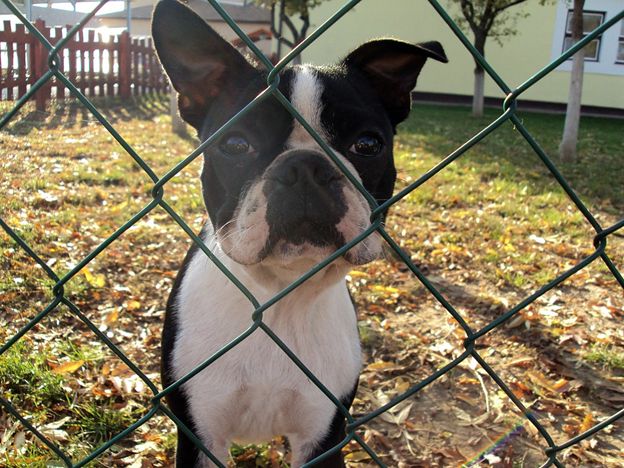How to Help Your Dog Be a Good Neighbor
By Nick Burton
Is your dog a good citizen, or do your neighbors take evasive maneuvers when they see you and your pooch coming their way? You don’t want to be that dog owner! Here are some tips for helping your furry family member embrace good etiquette.

Leash training. One of the top unspoken rules of neighborhood dog walking is proper leash manners. Thankfully, this is a dog etiquette skill you can teach your pup from the comforts of home. Walk your dog on a leash through your house, maintaining slack in the leash. Keep a steady distance between you and your dog, asking that he stops and starts when you do and navigates corners and obstacles with you. As skill increases, move your exercises to the great outdoors. Start with quiet areas and gradually increase the level of distractions and difficulties as your dog improves.
Fencing the yard. There are a slew of potential threats that come with an unfenced yard, including a means for your dog to escape, visible passersby that could activate aggressive behavior from your furry friend, and uninvited animal guests. The last one could be said about your dog, too, if you don’t install a fence around your yard. Your neighbor would certainly appreciate the reduced risk of finding your pet roaming around in their backyard. To decrease the chances of your dog performing an elaborate escape, make sure the fence is at least six feet tall, and stow away any objects that could assist in your pet’s attempts. Pet owners living in Lake Worth will likely pay $1,575 – $3,466 for their fencing needs.
Pick up poop. There’s no way around it. Sometimes, your pooch just has to “go,” and when he poops in the park, on the sidewalk, or anyplace other than the usual spot in your yard, it’s your responsibility to clean it up. Some dog owners allow their pups to eliminate in their neighbors’ yards, and you can be sure this will never win you or your pooch any awards for favorite of the neighborhood. Also, some experts note there are those who prefer your dog doesn’t pee in their yards as well. If possible, always opt for areas that are out of the way and discrete, rather than manicured lawns, landscaping, or children’s play areas.
Eating out. More restaurants and outdoor eateries are allowing dogs to dine, but before you and your pup partake, you should teach appropriate etiquette. For instance, if you allow your pooch to beg at home, that behavior won’t disappear in public. In fact, you’re likely to have him asking for a handout from other diners. Don’t allow your dog to ask for table scraps and limit where your dog is allowed to lounge while you eat. You can reinforce good behavior by leashing your dog at mealtime and practicing at home. Try it at a picnic table in a quiet park before going to a crowded café.
Dog parks. Visiting a dog park is fun, but if it leads to confrontations with other dogs or utter mayhem, it loses the appeal quickly. Cesar’s Way suggests taking your pooch on a vigorous walk before you ever get there. Park a few blocks away and burn off some energy so your dog will be better prepared to focus and relax. If your dog is socially disadvantaged and is either overly aggressive or submissive, work out those issues before going to dog parks. Dogs who are aggressive will be drawn to submissive ones, and then you may have a fight on your hands.
Never assume. While you may know your dog is friendly and outgoing, other people don’t. Similarly, if you come across a dog you don’t know, you can only count on and control yourself and your dog’s behavior. One suggestion is if you encounter a dog owner that oversteps his or her bounds, politely explain you’re working on etiquette with your dog, and it’s not a good time for doggy greetings.
Go out of your way. Sometimes you may need to be the one taking evasive maneuvers. If you see a neighbor with a dog phobia, an unfriendly-looking pooch, or a dog who is ill-mannered, some experts recommend that you take the initiative and cross the road. If sidewalks are narrow or the street is very busy, you may be able to simply distract your own dog with a snack. You may even bring an extra leash if you walk in an area where you expect to encounter stray dogs. It’s a way to get control when the situation could easily get out of hand.
Be a good neighbor! Teach your dog basic etiquette and pick up after your pooch. Be aware of others and take the initiative to prevent incidents. With some basic skills and strategies, you and your dog can be favorites of the neighborhood!

